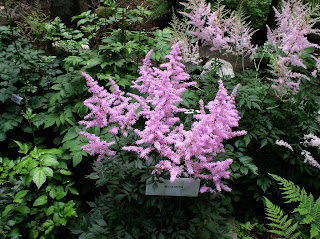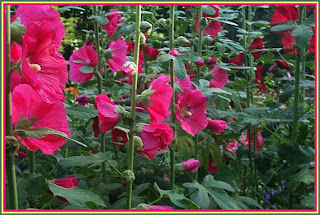
Tuesday, March 30, 2010
Quarter of five in the morning, 32 degrees, rain has stopped for a minute, fire in Hearthstone is blazing brightly again. This morning is nice. I am leaving in a few minutes for next-to-last day of work before retiring after +40 years. Can you see a smile on my face from where you sit? It's nice.
Lupines are a plant that many gardeners ask for each year, usually at the wrong time, as if they just don't know how easy they are to grow from seed and why you really should grow them from seed if possible. They are kind of like daffodils which will be popping up near house and barn foundations soon as their cheery faces bring on people wanting to buy bulbs. Again, the wrong time to be asking but another example of gardeners old and new just not being familiar with the plant.
 Lupines are very well publicized now and states such as Maine really promote fields of lupines as much as they promote blueberry festivals. This marketing leaves out the part about where they come from or how easily they naturalize.
Lupines are very well publicized now and states such as Maine really promote fields of lupines as much as they promote blueberry festivals. This marketing leaves out the part about where they come from or how easily they naturalize. Lupines are like hollyhocks with long roots that don't like to be disturbed. As such I start a few each year in large peat pots and then I can plant them right into the ground without challenging the roots. I soak the large seeds for a day in a light mix of water and fertilizer and they germinate well and grow on quickly. If you want a field full of lupines in fairly short order you can direct seed them into the soil but it's best to spend a few minutes and dig out the grass etc in one-shovel size holes before planting.
Lupines are like hollyhocks with long roots that don't like to be disturbed. As such I start a few each year in large peat pots and then I can plant them right into the ground without challenging the roots. I soak the large seeds for a day in a light mix of water and fertilizer and they germinate well and grow on quickly. If you want a field full of lupines in fairly short order you can direct seed them into the soil but it's best to spend a few minutes and dig out the grass etc in one-shovel size holes before planting.
To be honest I am not a great fan of lupines unless they are naturalized in big masses some distance from the house. That's because they are aphid magnets. Although aphids are generally specific to the plant they go after, they do travel from plant to plant and in that process they do what vectors do and spread disease if any exists. To me a lupine plant full of aphids is not the least bit attractive and it sure raises issue with ones ability to grow flowers.
If you like lupines, pick up a package of seed and get them started in mid April. They can go into the Vermont garden by the first of June, earlier if you live in warmer areas.
Writing from the mountain above Peacham Pond where the barred owl reminds me it's time to get going. Enjoy today, rain or not!
George Africa
The Vermont Gardener
Vermont Flower Farm: A site to visit where virtual tours will give good ideas
On Facebook as Vermont Flower Farm and Gardens
On Twitter daily as vtflowerfarm
If you like lupines, pick up a package of seed and get them started in mid April. They can go into the Vermont garden by the first of June, earlier if you live in warmer areas.
Writing from the mountain above Peacham Pond where the barred owl reminds me it's time to get going. Enjoy today, rain or not!
George Africa
The Vermont Gardener
Vermont Flower Farm: A site to visit where virtual tours will give good ideas
On Facebook as Vermont Flower Farm and Gardens
On Twitter daily as vtflowerfarm















































